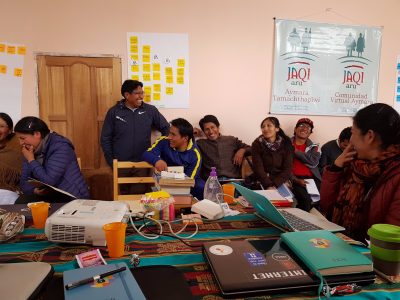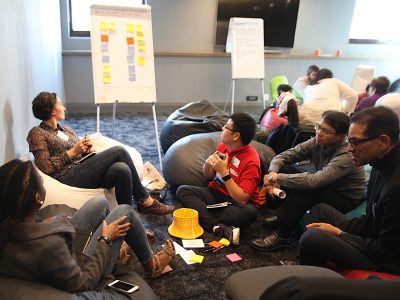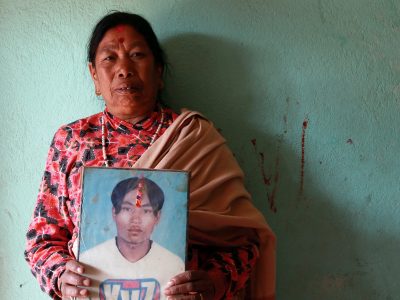In 2014, several indigenous communities in the Mekong started recording their stories and legends with the help of a group of researchers who are exploring how these narratives can help exposing the destructive impact of large-scale projects in the region.
The Mekong is one of Asia’s great river systems which flows through six countries: China, Myanmar, Thailand, Laos, Cambodia, and Vietnam. It is rich in biodiversity and a vital source of livelihood for millions of farmers and fisherfolk.
In recent years, several large-scale projects such as hydropower dams have displaced residents while threatening the river basin's ecosystem. Despite protests, the construction of dams has continued, especially in Laos and Thailand.
In partnership with Mekong Watch, a Japan-based group advocating sustainable development in the region, several community elders in the Mekong began recording some of their stories and legends in 2014 that revolve around nature. Mekong Watch believes that these stories “have played an important role in protecting nature by avoiding the over-exploitation of natural resources.”
Mekong Watch asserts that part of the commons that need to be protected are not just natural resources but also “intangible heritages” that can be shared and accessed by the local community. Toshiyuki Doi, senior adviser of Mekong watch, adds:
People’s stories should be regarded, recognized, and respected as Mekong’s commons, especially these days when they are losing their place in local communities to more modern media, and are not passed on to next generations.

Areas in the Mekong where researchers conducted fieldwork. 1. Kmhmu’ in northern and central Laos; 2. Siphandon in southern Laos; 3. Akha in northern Thailand; 4. Thai So and Isan in northeastern Thailand; 5. Bunong in northeastern Cambodia. Used with permission.
The group was able to collect a total of 102 stories in Cambodia, Laos, and Thailand. Stories were recorded, transcribed, and translated into the national languages of Thailand, Laos, and Cambodia before an English version was made. Mekong Watch published these stories as pamphlets in both printed and digital formats, and used them during environment workshops they conducted at the communities.
Since late 2016, we have used people’s stories to provide environmental education to children in rural Laos and Thailand. We have hosted workshops in schools and local communities to guide children, and sometimes adults, to collect stories from elderly people, learn from the stories, and turn them into reading materials.
An example of a workshop involves the retelling of the story of ‘The Owl and the Deer’ from Kmhmu’ people in central and northern Laos. The story is about an owl who lost his ability to see during the day after cheating a deer.
During a workshop, young participants are asked: “What kinds of animals appear in the story?”, “Can you see these animals in your village?”, and “If there are fewer of these animals in your village than before, why do you think this has happened?”
After this, participants are encouraged to connect the story to the deterioration of the environment in their communities.
In Champasak Province, south Laos, the legend of the endangered Irrawaddy dolphin and the Sida bird is used to highlight how a dam project is disrupting the seasonal migration of Mekong River fisheries.
Another story also from southern Laos is instructive on the value of resource management:

The story about the Rhino Head was recorded on November 16, 2014, at the Songkram River bank in northeast Thailand. The narrator was Mun Kimprasert, aged 68. Photo by Mekong Watch, used with permission.
Once, a soldier stepped into a spirit forest. He discovered a lot of tobacco leaves there and collected them. However, when trying to leave the forest, he could not find an exit. It was because he took more tobacco leaves than he could possibly consume for himself. No matter how hard he searched, he could not find a way out of the forest. Realizing what might have been the problem, he finally decided to return the tobacco leaves to the forest. The moment he dropped them on the ground, he was able to see an exit in front of him.
In northern Thailand, a story by the Akha people about the origin of the swing teaches self-sacrifice through a heroic episode of a brother and a sister who put the world in order.
In northeast Thailand, a folktale about Ta Sorn narrated by Tongsin Tanakanya promotes unity among neighbors in a farming community. Another story recalls how the hunting of a rhinoceros led to the formation of salt trading in this part of the country.
In Bunong, located in northeast Cambodia, there are stories about rituals to fix bad marriages and planting and harvest ceremonies narrated by Khoeuk Keosineam. There is also the legend of the elephant as retold by Chhot Pich which reveals how villagers who once poisoned a river were punished by the gods and turned into elephants. It explains why elephants were comfortable living with humans but, after several generations, they forgot their origins and went to live in the forest.

Hea Phoeun from the Laoka Village, Senmonorom, Mondulkiri Province in Cambodia shares a village ritual on how to fix an ‘unfit’ marriage. Photo by Mekong Watch, used with permission.
For Mekong Watch and the threatened communities in the region, preserving these stories is integral in the campaign to resist projects that would displace thousands of people living in the Mekong:
These stories can help form their identity as a community member and identify with the environment. By means of stories, the communities search for ways to accommodate and/or resist changes that are taking place in the Mekong river basin.




